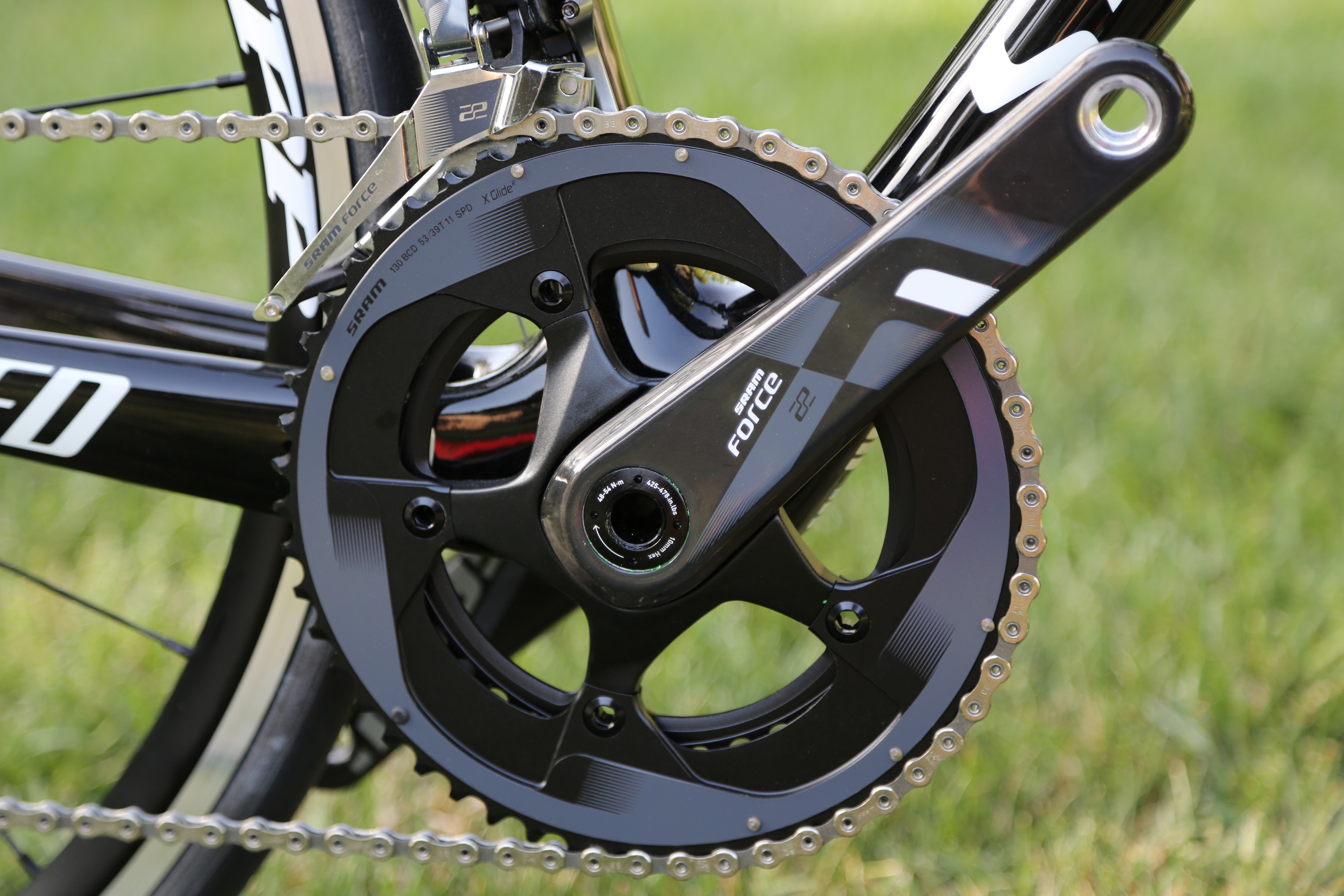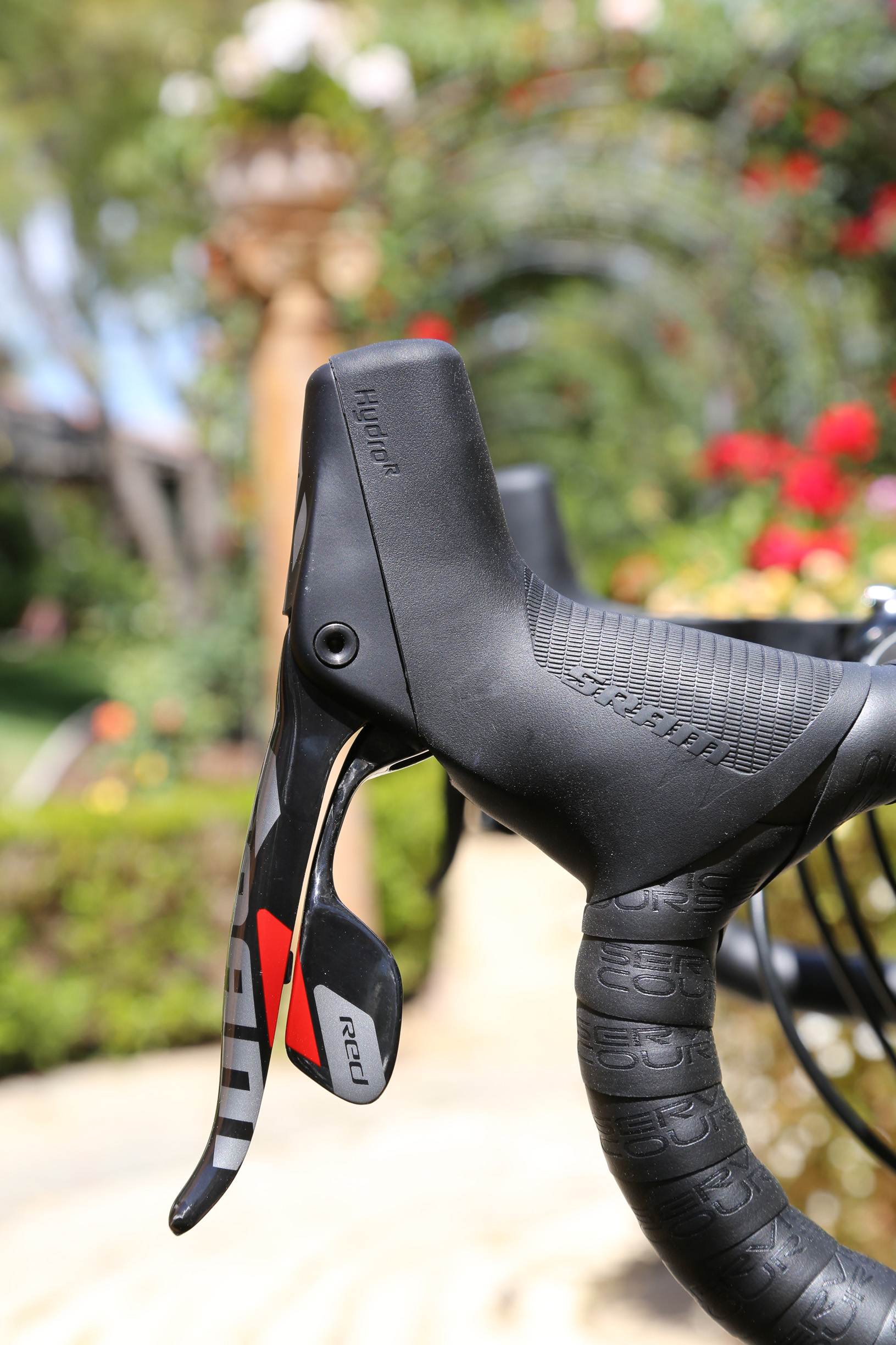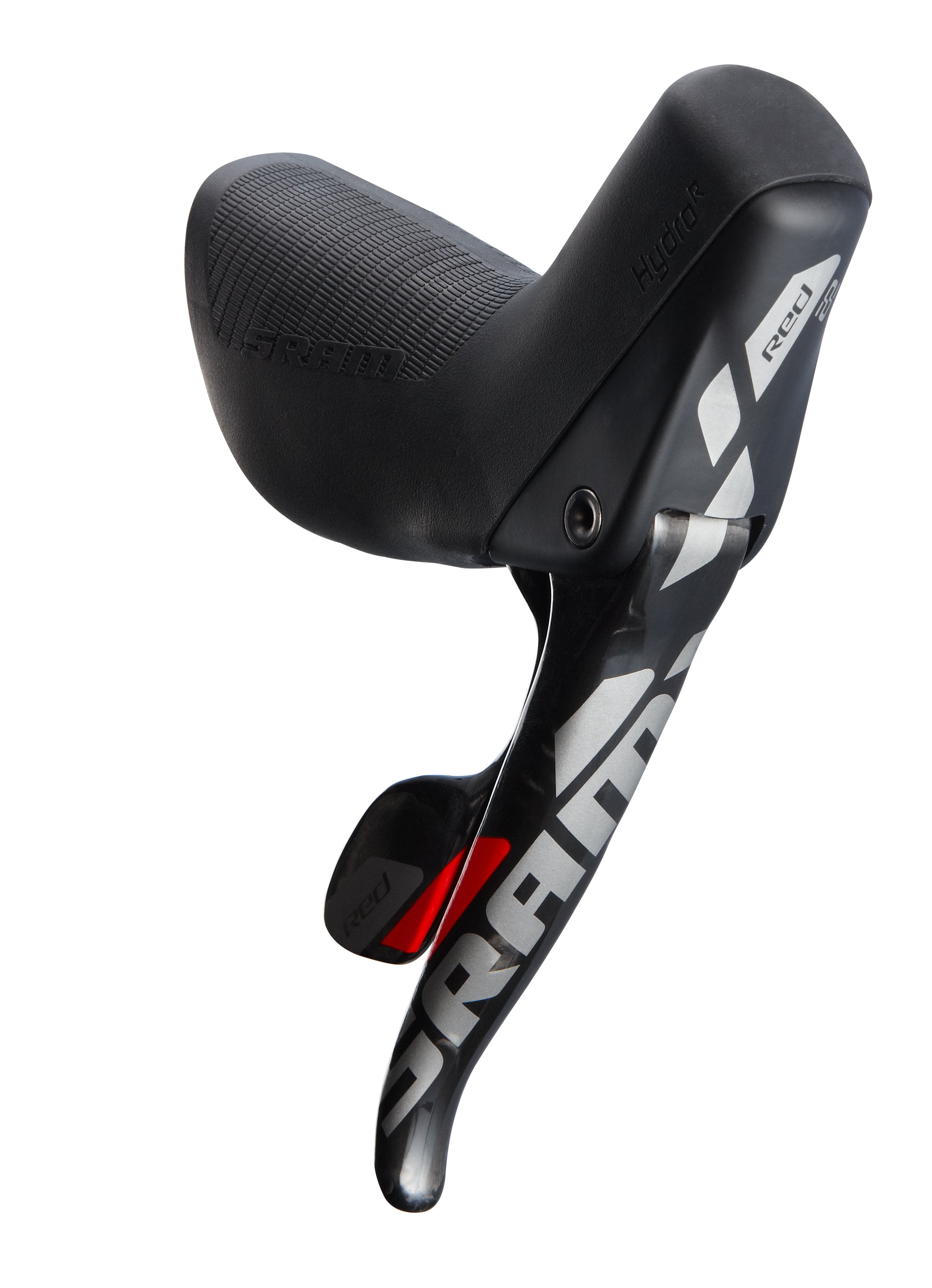
What a weekend! Seattle got hail and snowfall in the city, and Hugger-in-Chief Byron got down to Cali for the SRAM’s “22” launch. What’s “22”? That would be the number of speeds the new SRAM Red and Force groupsets offer. In the equivalent of tying a coconut to a pair of swallows, SRAM offers a drivetrain that allows the rider to utilize all 22 possible gear combinations, all without rub or the need to trim the front derailleur. SRAM wants you to know that they are bringing a true twenty-two speed drivetrain to the rider, but that’s not why you’re going to read this post. You’re gonna read this post because of the hydraulic brakes.
I really don’t know what I’m going to do with myself now that I won’t have the opportunity to use a really condescending voice when I explain to novice bike shoppers that the correct nomenclature for a road bike is expressed as a “ten speed triple” or an “eleven speed double” because the extreme crossover combinations are not usable. Already on most SRAM equipped bikes with the recent YAW-type front derailleur of the 2012 Red group, you can hit all the cogs cleanly from the big ring, and all the cogs save the first position cog since the chain hits the big ring on its way from the inner ring. An educated guess is that SRAM engineers increased the spacing between the rings to get the inner ring out of the shadow of the big, and then further tweaked the YAW derailleur, which uniquely translates slightly on a vertical axis as it moves laterally outward. Like 10sp Red, the new Red22 and Force 22 do away with front derailleur trim positions; you slam it up or slam it down and the system does the job with no further ado.
Of course, SRAM could have just done the same thing for the Red and Force gruppos and kept it to just 10 cogs on the back, but the bicycle industry is all about keeping up with the Joneses. So rest assured, there are now 11 cogs on the back. If you had to pinpoint the gain exactly, it would be the 16T cog, hereto absent from 11-25, 11-26, and 11-28 cassettes. The 11sp cogs are more densely spaced, but not so closely spaced that you can run the new cassettes on all the hubs that take 10sp cassettes. Like Shimano 11, SRAM uses the same spline mounting pattern (the venerable Hyperglide interface) but the body must be slightly wider. At least Shimano 11 and SRAM’s PG-1170 and XG-1190 cassettes can fit the same freehub, and many hub manufacturers have already retooled for the wider bodies (sidenote: every Mavic road wheel made in the last 14 years is already 11/22 compatible). In terms of construction, the SRAM cassettes are linear evolutions of the respective 10sp predecessors, the PG-1070 and the “Powerdome” XG-1090.
While the standard brake Red22 is largely Red 2012 with another cog and a mandate to cross-chain like a mofo, with the new Force 22, SRAM is gunning for Shimano’s Ultegra. Force 22 has leaned down in all the right places and even preempted the Japanese workhorse group by going to 11sp. The all-black Force 22 catches up to the newest Red drivetrain all at once, including the updated lever shape, YAW front derailleur, and chainrings. The YAW front derailleur now has an integrated chain catcher too, and the styling on the rear derailleur has been updated. However the brakes outwardly differ only in the new colour and a revamped barrel-adjuster. The caliper arms appear to be the same forged pieces that where originally used by the first generation Red and in later-gen 10sp Force; they are dual-pivot rather than the cam-actuated single-pivot design of the Red standard brakes introduced in 2012.
The new Force 22 crankset is perhaps the most distinctive aspect of the group. Departing from recent practice, the new crank uses a carbon arm and alloy spider in a manner last seen from a SRAM road crank with the Truvativ Rouleur crank. Knowing observers recognize that this design reduces the costs associated with providing for cranksets of compact 110mm and standard 130mm bcd in multiple lengths each as well as for GXP (ie traditional threaded BB) and BB30/PF30 bottom brackets. Indeed, SRAM also adds a 165mm arm length offering. All the same, the new crank design has a firm, faceted style that differs from the parallel, planer surfaces of Red or the seashell-shape of Ultegra. It looks exactly like what it is: a fine machinery assembly of precise, close-fitting pieces. Like newer Red, Force’s crank uses a hidden 5th chainring bolt, ostensibly to “reduce crank weight and add stiffness”, two claims undermined by the fact that the 5th bolt attaches to the portion of the alloy spider behind the crankarm rather than to the crankarm itself, like on the full carbon Red or the last several generation of Campagnolo carbon cranks. On the other hand, since this design (similar to Sugino cranks and the original Campagnolo C-Record crank) uses a more or less standard bolt/nut instead of a hard-to-replace, proprietary item. The Force crankset will be available with 53/39, 52/36, 50/34, and 46/36 chainring options.
Both Red 22 and Force 22 rear derailleurs will have a WiFLi option, SRAM’s marketing concept of using a compact, 50/34 crankset with an 11-32T cassette for gearing that matches or exceeds that of a traditional road triple, except with the lightweight and simplicity of two chainrings. The WiFLi derailleurs have longer cages to increase the derailleur’s chain slack capacity. For all derailleur’s B-knuckle (upper portion connecting the mounting bolt to the top of the parallelogram) is a little longer to provide better clearance when used with 28T cassettes. The SRAM 22 derailleurs are described as using “Exact Actuation”, which would imply that the new derailleurs share the same cable-pull ratios as all SRAM 10sp rear derailleurs, road and mountain. However, I was unable to get confirmation from SRAM representatives.
Back when SRAM first stepped into the road component market with their own 10sp shifters and derailleurs, they spec’ed a ratio that required a lot more pull at the shifter for a given lateral translation of the rear derailleur. This strategy reduced cable forces and made shifting performance less sensitive to the condition of cables/housing. Compare this to Shimano, who had used the same ratio for their derailleurs since the indexed 6speed era. The 8/9/10sp road derailleurs had the same overall cassette width but progressively finer cog-to-cog spacing. Shimano selected a more SRAM-like cable-pull ratio when they brought 10sp to their mountainbike groups, which likely improved shifting but ruined the versatility of being able to mix Shimano road and mtb components for bikes like tandems, touring, and cyclocross. Apparently Shimano chose a new ratio for their 11sp road derailleur which is maddeningly neither the old standard nor the mtb 10sp ratio. SRAM debuted “Exact Actuation” in 2006, so I had rather hoped that SRAM could stay the path on that topic. Why should you care? Because sticking to the same cable-pull ratio for the next generation of derailleur insures that in the future consumers will have ready access to compatible replacements for their 10sp systems and eases the cost of converting from 10sp to 11sp. It’s not surprising that SRAM representatives were coy about backwards compatibility for drivetrain components; official party line is that the SRAM 22 rear derailleurs/shifters are not intercompatible with the 10sp items. With alleged chainring spacing changes and the uniqueness of SRAM’s YAW front derailleurs, I would frankly be surprised if there any thing resembling compatibility of SRAM 22 front shifting. Shimano has also been randomly changing cable-pull ratios for front derailleurs, introducing a new ratio with each of the last two Dura Ace iterations.
So, that’s about all you’d want to know about the SRAM launch…….unless of course you have NOT been living under a f***ing rock for the last year. The real story from the launch, and indeed the entire road bike market, is the imminent arrival of hydraulic disc brake systems with integrated brake/shift levers, which SRAM calls “Hydro R”. Every man, woman, and Fred in the industry knew it had to come first from either SRAM or Shimano, and the other shoe just dropped. What is superficially perplexing is SRAM’s two-prong attack, introducing both the eagerly waited disc brake (HRD) as well as a rim brake (HRR) that is essentially a hydraulically actuated single-pivot road caliper.
In the coming days, every journalist who actually got to ride the test bikes is going to relate their post-coital revelations about SRAM’s HRD: word has it that the brakes work very well. For road use, hydraulic disc brakes have the potential to for increased safety from braking power unaffected by water on the rims and increased power and control in all conditions. Also, the hub mounted rotor transmits no heat to the rim and tyre. For cyclocross, hydraulic disc brakes offer all-weather power and modulation but add increased clearance for mud. And while cable-actuated disc brakes offer some of these benefits, hydraulic disc calipers promise to do it better and have self-adjusting pads. The HRD caliper is unique to the road group, though it certainly has a family resemblance to the XX unit from SRAM’s high-end, offroad XX group. As expected, it is a dual piston design, in this case using 19mm pistons up front and 18mm in back, optimizing power and modulation for their respective positions. Though there has been rumours that OEM manufactures were calling for a road-specific mounting standard, SRAM made the rational decision of using the currently most common standard, 74mm post-type mount. The two rotor size choices are 140mm and 160mm, to be offered in standard 6-bolt ISO hub mounts as well as CenterLock splined mount. Both mount a stainless steel rotor fixed to an alloy carrier.
In case you hadn’t heard that heat management was one of the biggest engineering obstacles to a lightweight road disc brake, you might have assumed that the 140mm rotor was for road use while 160mm was for offroad/cyclocross applications. In fact it is just the opposite, with SRAM suggesting the 140mm rotor specifically as an option for offroad. The larger rotor has more surface area to better shed heat, important for long descents. Meanwhile the 140mm rotor is ideal for cyclocross which rarely sees such high speeds or sustained braking. SRAM engineers are adamant that their system will not experience the loss of braking that occurs when excess heat buildup causes the fluid behind the piston to boil.
Whereas the Red disc caliper is suitably svelte looking, the aesthetics of the Hydro R lever have already ignited controversy. In the standard SRAM “DoubleTap” integrated lever, all the space in the hood behind the levers is already occupied by the shifter mechanicals, so SRAM engineers dramatically extended the upper knob of the body into a distinct horn to house the system’s master cylinder. Bleeding is readily accessible by peeling back a portion of the rubber hood. Oddly reminiscent of the coneheads from the old Saturday Night Live skit, these levers certainly stand out, but the primary hand positions still feel the same as the standard Red levers. If anything, these Conehead levers might possibly offer an alternate position to grasp while stretched out and cruising. The brake and shifter lever blades are both carbon. As a system of rotors/hoses/calipers/11sp levers, the Red HRD will retail for $1122 (plus $144 for HSX rotors) and weighs 898gr per bike, which equates into a 200-300gr weight gain versus standard Red.
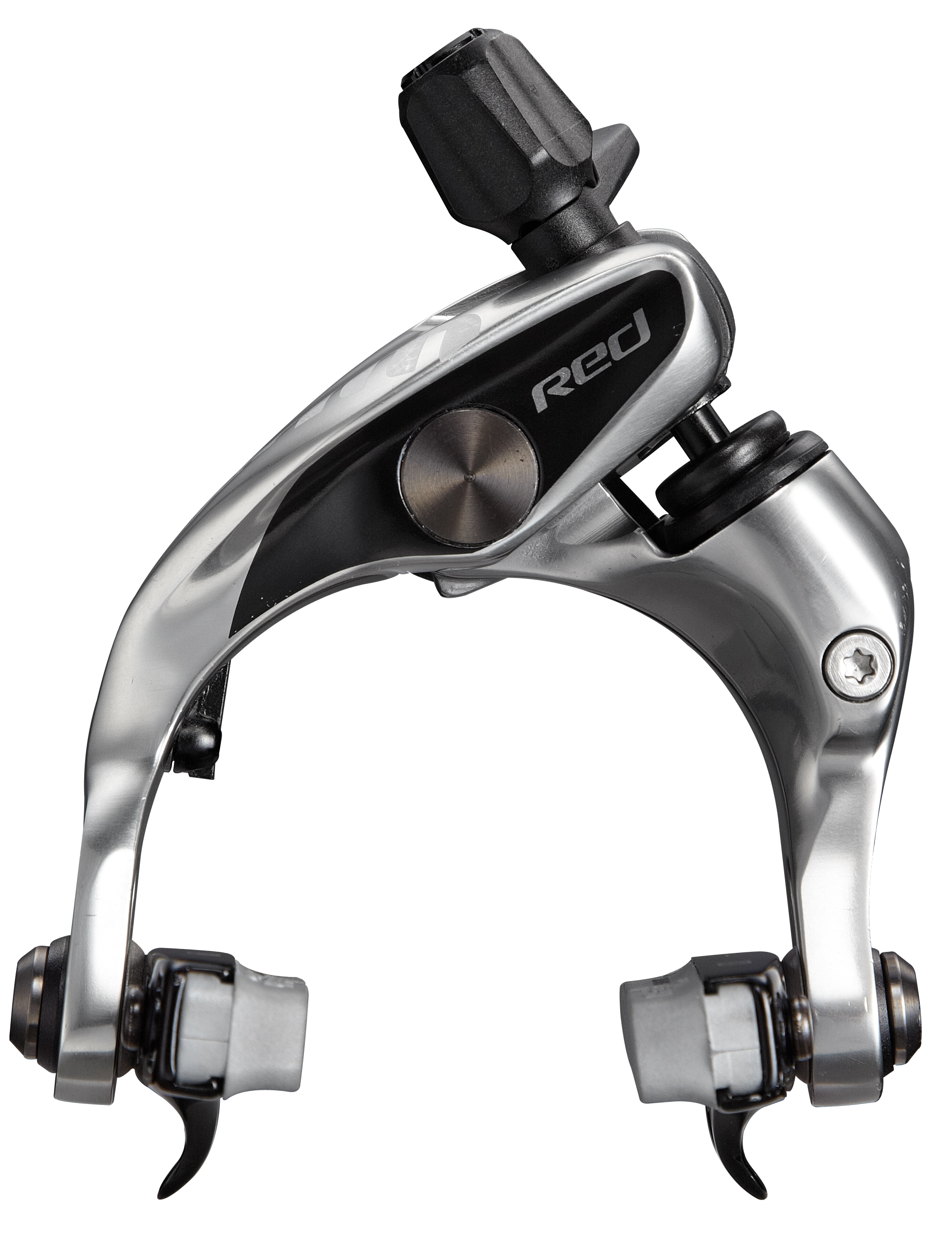
The other hydraulic brake system is the Red HRR rim brake, which brings the power and smooth modulation of hydraulics to bikes with regular rim brake mounts. Mated to the same Hydro R lever as the disc brake caliper, HRR brings more power and more control with a lighter lever effort than is possible with standard cable calipers. The HRR caliper has regular cartridge pads, reach dimension, a quick release, and no-tools contact point adjustment. The HRR caliper also fits fat aero rims such as the (SRAM sub-brand) ZIpp’s Firecrest wheels (27.5mm at the brake track). At about 760gr for levers/hoses/calipers ($898), the HRR is only about a 150-200gr penalty from the standard Red brake system. Keep in mind that the regular Red cable calipers weigh a little more than a whimsy at 240gr per pair while the first generation of Dura Ace dual pivot calipers weighed almost 450gr per pair, but the hydraulic HRR beats ‘em both in performance.
After all that, SRAM pulls one more trick from their sleeve: they’ve got Hydro R for 10sp too. The S-700 hydraulic levers are more or less identical to the Red 22 units, save for aluminium lever blades and different graphics, and work with current generation SRAM 10sp drivetrain components. Who says that the bike industry is hellbent on planned obsolescence? Actually, this is possibly a very savvy move on SRAM’s part, as there are already 2 or 3 model years of disc-compatible cyclocross bikes (with wheels that are not 11sp compatible) in the consumer realm that are ripe for upgrades. The S-700 disc brake system weighs 986gr all up and costs $796 (plus $99 for HS1 rotors); the main differences in caliper being stainless steel hardware instead of titanium and a steel-back pad. The S-700 rim brake costs $572 as a system and weighs 844gr; the caliper also uses stainless steel hardware.
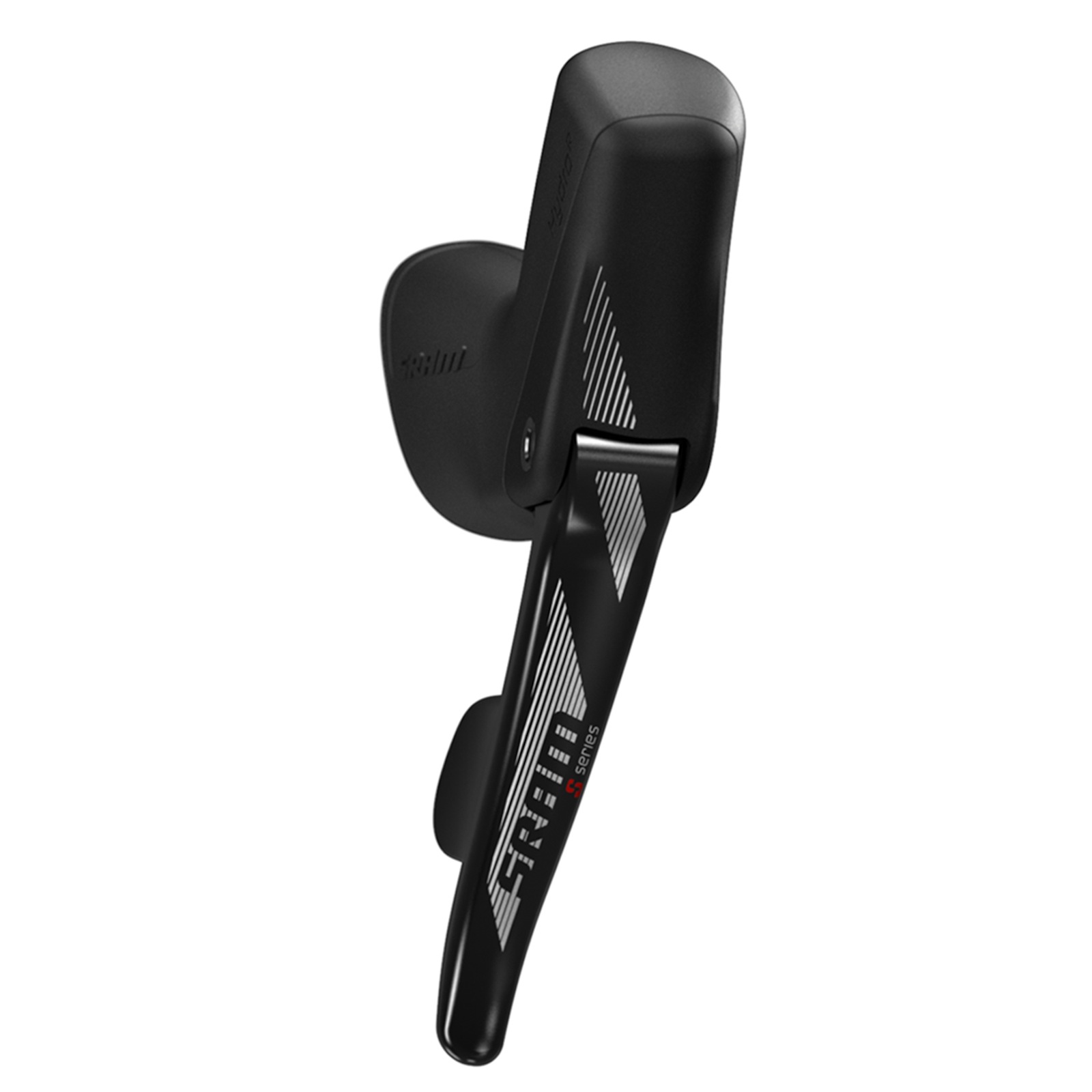
Beyond all the marketing speak, glut of acronyms, and additional cogs, SRAM just took a very aggressive step towards shaping the future of road cycling. The new Force 22 groupset will certainly bite into Ultegra’s market share, but the Hydro R brake system, particularly the disc brake, might very well signal a new paradigm in road bike design. The last innovation that truly changed the way we ride bicycles was the Dura Ace STi, the first integrated shift/brake lever, but the changes it prompted to bike design were subtle at most. The fully integrated hydraulic brake system could potentially increase safety and performance for both the racer and civilian enthusiast, and the possibilities that it allows in frame/fork design are still emerging.
Note: Byron’s post on the ride will run later today in time for lunch.
…We're riding townies, adventure, and mountain bikes. Find recommendations on our store page. As Amazon Associates we earn from qualifying purchases.
